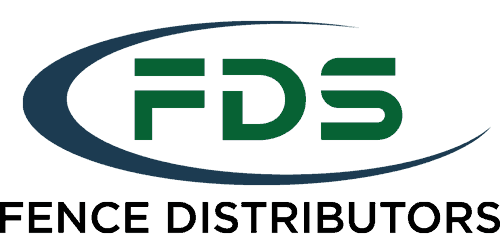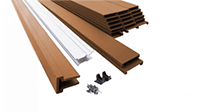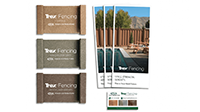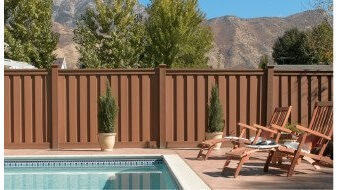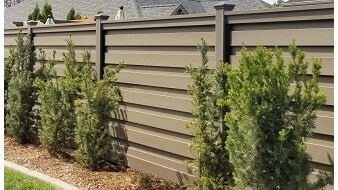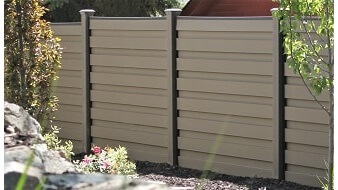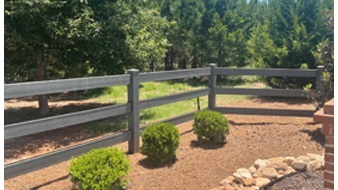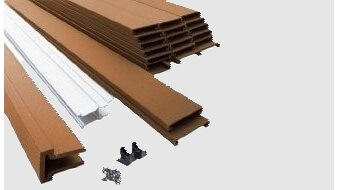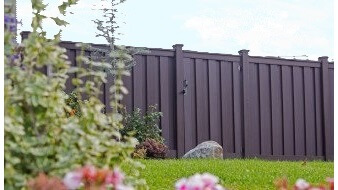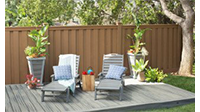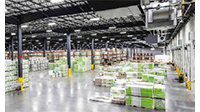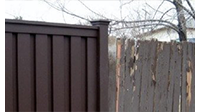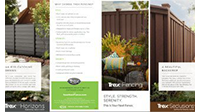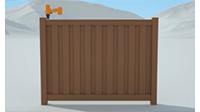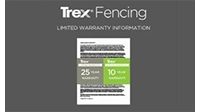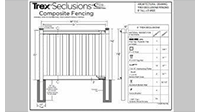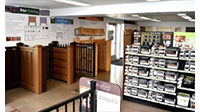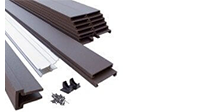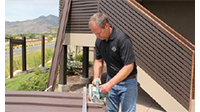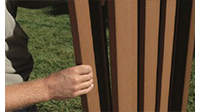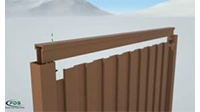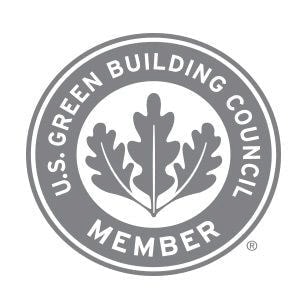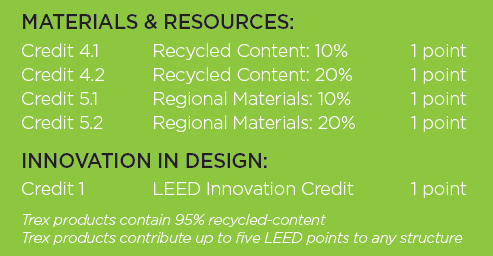The Eco-Friendly Fence System
Eco-friendly products are the core elements in green building. From the beginning, Trex has been environmentally responsible. The composite material in its decking and fencing line is comprised of 95% recycled content in the form of reclaimed hardwood softwood fibers and plastic film. Over 500+ million pounds of plastic and wood is kept from landfills every year and almost 100% of all factory waste is reclaimed.
Energy for manufacturing Trex is primarily produced from natural gas, not petroleum sources, and its closed-loop systems save millions of gallons of water per year. No trees have ever been cut down to manufacture Trex products. Trex is also conscious of the additives used in the manufacturing process and does not use any chemicals harmful to the environment.
Trex is a proud member of the US Green Building Council (USGBC), a leading non-profit organization that advocates and promotes sustainable building. Since 2009, Trex has participated in the USGBC’s programs and contributes green building points through the organization’s LEED rating system.
The LEED rating system is a green building certification program used to identify opportunities in sustainable design, construction, operation and maintenance of buildings and properties. It was developed by USGBC in the early 1990s (and updated over the years) to help architects, contractors, consumers and others to classify and determine adherence to standards for environmentally responsible building. Trex contributes up to five points in LEED building projects including recycled content, regional material manufacturing, and innovation in design. Depending on a project’s requirements for credits, Trex could contribute 5-10% towards certification, which is significant given that there are four certification levels. Trex’s point contribution could take a project to a higher level if it is close to one of the thresholds.
Trex Eco-Friendly Fencing Contributes LEED Green Building Points
While the LEED system is primarily used in commercial applications or in projects where building professionals have designed criteria around the rating classifications, the system is a helpful benchmark for homeowners and other consumers that wish to maximize their adherence to green building standards. Consumers can be assured that Trex is committed to a real and substantial impact on environmental responsibility for our current and future generations.
The following environmentally responsible attributes set Trex Fencing apart from wood suppliers and other businesses that produce manufactured products.
- 95% recycled content
- Why this is important: As the largest producer of wood-plastic composite (WPC) materials, Trex accounts for the acquisition of the highest quantity of reclaimed waste material used in WPC products. Trex’s leadership in the fencing and decking industry is allowing it to rapidly gain on wood as the primary material in that space. That means fewer trees are being consumed unnecessarily each year and less discarded plastic is ending up in the environment.
- Green sourcing and manufacturing
- Why this is important: One of the easiest ways to reduce greenhouse gas emissions is to reduce the number of miles that trucks haul materials. Trex’s primary manufacturing facilities are located near geographical areas that have large quantities of raw source materials. This supply chain sustainability accounts for the materials used in the majority of all Trex products. Additionally, the manufacturing facilities use methods to reduce energy consumption and eliminate almost all factory waste through reclamation.
- Corporate philosophy and governance
- Why this is important: Everything about Trex has an eye on environmental sustainability. This includes utilizing Six Sigma and Lean Manufacturing methods in plant operations, communicating environmental policies within the Trex employee base, and promoting green principles through corporate stewardship. See a detailed report from Trex regarding sustainability.
- No painting or staining required
- Why this is important: Manufacturing paint or stain (and sealers, if desired) and applying the products at job sites requires energy and produces environmental waste. Trex eliminates the need for the consumption of these products because the fencing is manufactured with a pigmentation process that facilitates color retention throughout the life of the material. Since the wood fiber in Trex is bonded with the plastic elements of the product, Trex also does not require sealing the surface to protect against degrading that naturally occurs with wood.
- High wind load capabilities
- Why this is important: The density and strength of Trex composites reduces the possibility of damage, which means fewer resources are used to produce replacement materials.
- Long life-expectancy
- Why this is important: In the anticipated lifetime of a Trex fence, a property owner can expect to replace a wood fence twice and possibly three times. That not only means a lot of trees are cut down for lumber, but also additional energy and resources are used to install the fence each time.
- No rotting, cracking, warping, splitting, splintering
- Why this is important: A full replacement shouldn’t be the only consideration. Wood fences will require spot fixes before a replacement, which will consume resources.
Beyond creating green materials, Trex produces durable products. Durability is an important topic for leaders in environmental science as they look at the broader picture of sustainable building. Trex’s products offer a level of durability far beyond that of wood and other manufactured products. Wood is completely organic, which means that it will degrade naturally much faster than a manufactured product. Additionally, an inferior composite or weaker fence design reduces the benefit of using recycled content.

THE ECONOMIC ADVANTAGE OF TREX
Green building can positively affect the green in your wallet over time. Since Trex is a durable, low-maintenance fence, it will virtually eliminate ongoing costs. Every painting or staining project that is required to maintain a wood fence not only has a negative impact on the environment, it also means a user can expect perpetual expense. Additionally, a typical wood fence will need to be replaced in 10-15 years (and will require ongoing spot repairs such as replacing rotting posts, warped boards, or cracked rails). Essentially, that means a user can expect to pay for their wood fence at least twice, plus the ongoing maintenance costs, in the minimum anticipated lifetime of a Trex Fence. Additionally, a hidden cost that consumers should take into consideration is that the cost of resources and labor is volatile. Prices may be soft in a downturn, but the skilled labor pool in the contractor community during a strong economy is prone to shortages. The increased demand creates upward price pressure. Lumber prices have been increasing rapidly in recent years as demand relative to supply, global trade conditions, and a reduction in the quality of wood affect the market. All of this contributes to the inability for a consumer to set budgetary expectations of what their future costs will be for repairs and replacements. Trex material is designed to be free of manufacturing defects for at least the warranty period, which allows consumers to avoid budgetary allocations for volatile future expenses. Over time, going green with Trex is the better financial decision.


